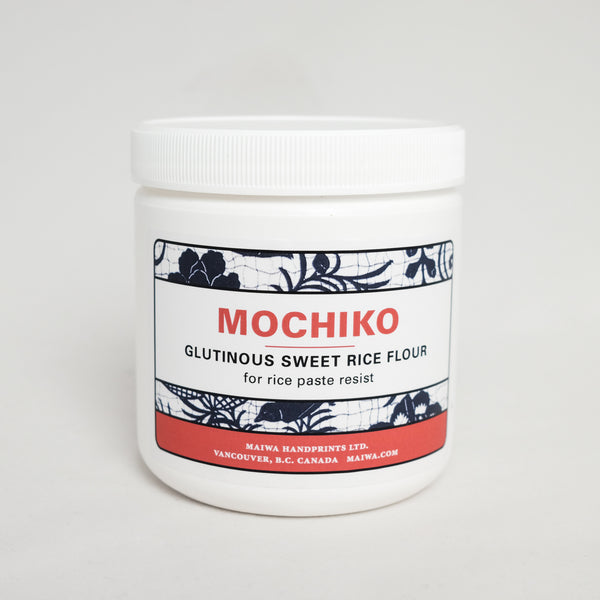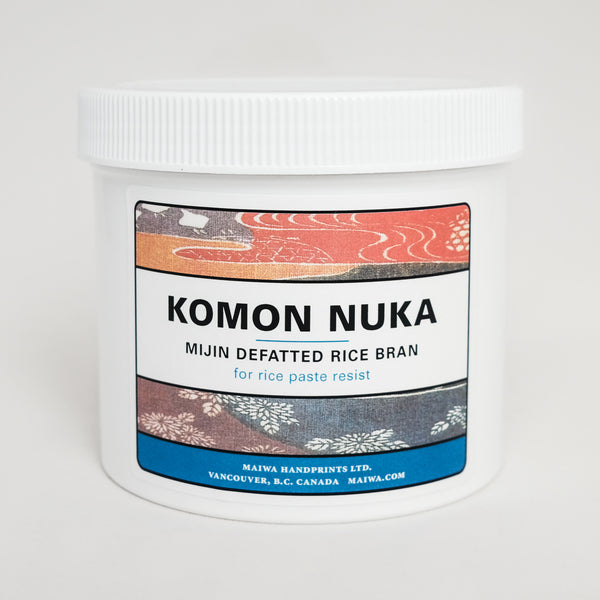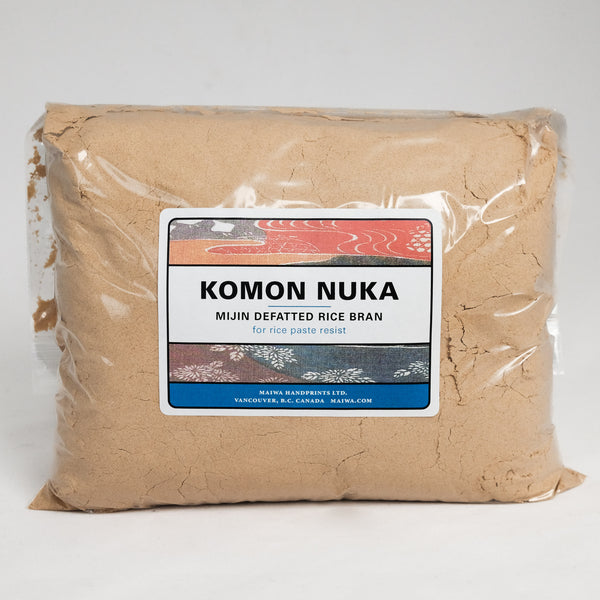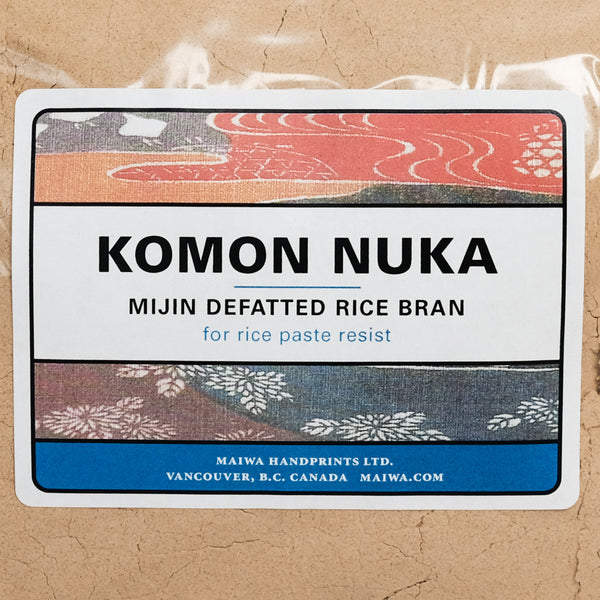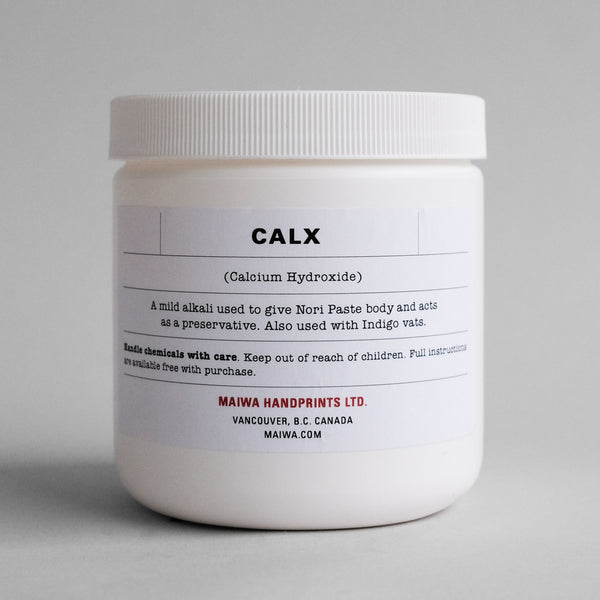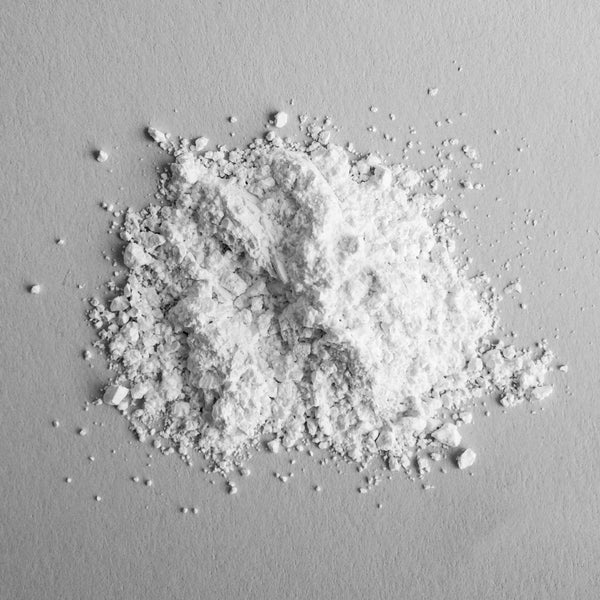Nori Paste
Recipes for rice paste resist are found in many cultures. One that we have found to be exceptional is the Japanese Nori Paste. The Japanese word norizome originates from a combination of the words nori meaning paste and zome meaning to dye. Norizome describes a resist dyeing technique involving the applications of a rice-flour based paste to fabric to prevent dye from penetrating in design areas. The paste, consisting of rice flour (mochiko), rice bran (komon nuka), salt, water, and calcium hydroxide, has the advantage of withstanding short immersion dyebaths like indigo and is excellent for direct application methods using products like Procion MX dye and Setacolor fabric paint.
There are two methods to apply the paste – screened through a mulberry paper stencil, a process known as katazome or drawn on using a mulberry paper cone or tube with brass tips a process known as tsutsugaki.
